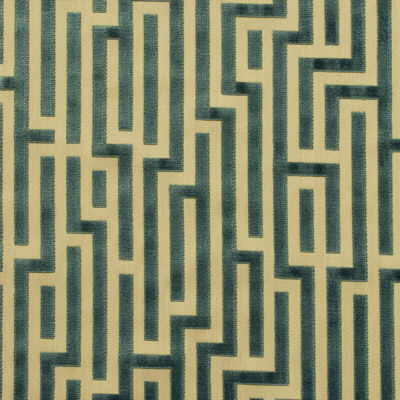According to Wikipedia - Geometry (Greek γεωμετρία; geo = earth, metria = measure) is a part of mathematics concerned with questions of size, shape, and relative position of figures and with properties of space. The earliest recorded beginnings of geometry can be traced to ancient Mesopotamia, Egypt, and the Indus Valley from around 3000 BCE.
The theme of symmetry in geometry is nearly as old as the science of geometry itself. But the question that arises here is why geometric patterns read as contemporary or modern patterns. This movement was, in a sense, an amalgam of many different styles and movements of the early 20th century, including Neoclassical, Constructivism, Cubism, Modernism, Bahaus, Art Nouveau, and Futurism.
The structure of Art Deco is based on mathematical geometric shapes. It was widely considered to be an eclectic form of elegant and stylish modernism, being influenced by a variety of sources. Among them were the so-called "primitive" arts of Africa, Ancient Egypt, and Aztec Mexico, as well as machine-age or streamline technology such as modern aviation, electric lighting, the radio, the ocean liner, and the skyscraper.
From Le Corbusier Five Points of Architecture to the innovative use of colorful geometric and classic patterns by David Hicks. Today we can appreciate the use of geometric fabrics to add a splash of modern sense to any space. Here is a recollection of some of my favorite geometric patterns in fabrics. I have to say that the pictures don't do justice to the quality of the textiles.
All fabrics available through Meade Design Group.
The theme of symmetry in geometry is nearly as old as the science of geometry itself. But the question that arises here is why geometric patterns read as contemporary or modern patterns. This movement was, in a sense, an amalgam of many different styles and movements of the early 20th century, including Neoclassical, Constructivism, Cubism, Modernism, Bahaus, Art Nouveau, and Futurism.
The structure of Art Deco is based on mathematical geometric shapes. It was widely considered to be an eclectic form of elegant and stylish modernism, being influenced by a variety of sources. Among them were the so-called "primitive" arts of Africa, Ancient Egypt, and Aztec Mexico, as well as machine-age or streamline technology such as modern aviation, electric lighting, the radio, the ocean liner, and the skyscraper.
From Le Corbusier Five Points of Architecture to the innovative use of colorful geometric and classic patterns by David Hicks. Today we can appreciate the use of geometric fabrics to add a splash of modern sense to any space. Here is a recollection of some of my favorite geometric patterns in fabrics. I have to say that the pictures don't do justice to the quality of the textiles.
All fabrics available through Meade Design Group.
Kravet Coture - Michael Berman
100% Viscose - 100% Linen - France
 Inlay
InlayKravet - Barbara Barry
36% Linen, 35% Cotton, 29% Silk - India
 29191
29191Kravet - Kravet Green
100% Recycled Polyester - U.S.A.
 Hexagon House Chenille - Stone
Hexagon House Chenille - Stone Groundworks - David Hicks
68% Rayon, 32% Cotton - U.S.A.
 Mirella
Mirella Kravet - Echo Home
82% Viscose , 18% Cotton - Belgium












Great post - I always enjoy a beautiful new geometric fabric!
ReplyDeleteWonderful post on graphic fabrics. They are simply stunning! Love the one by Windsor Smith :)
ReplyDeleteKaren